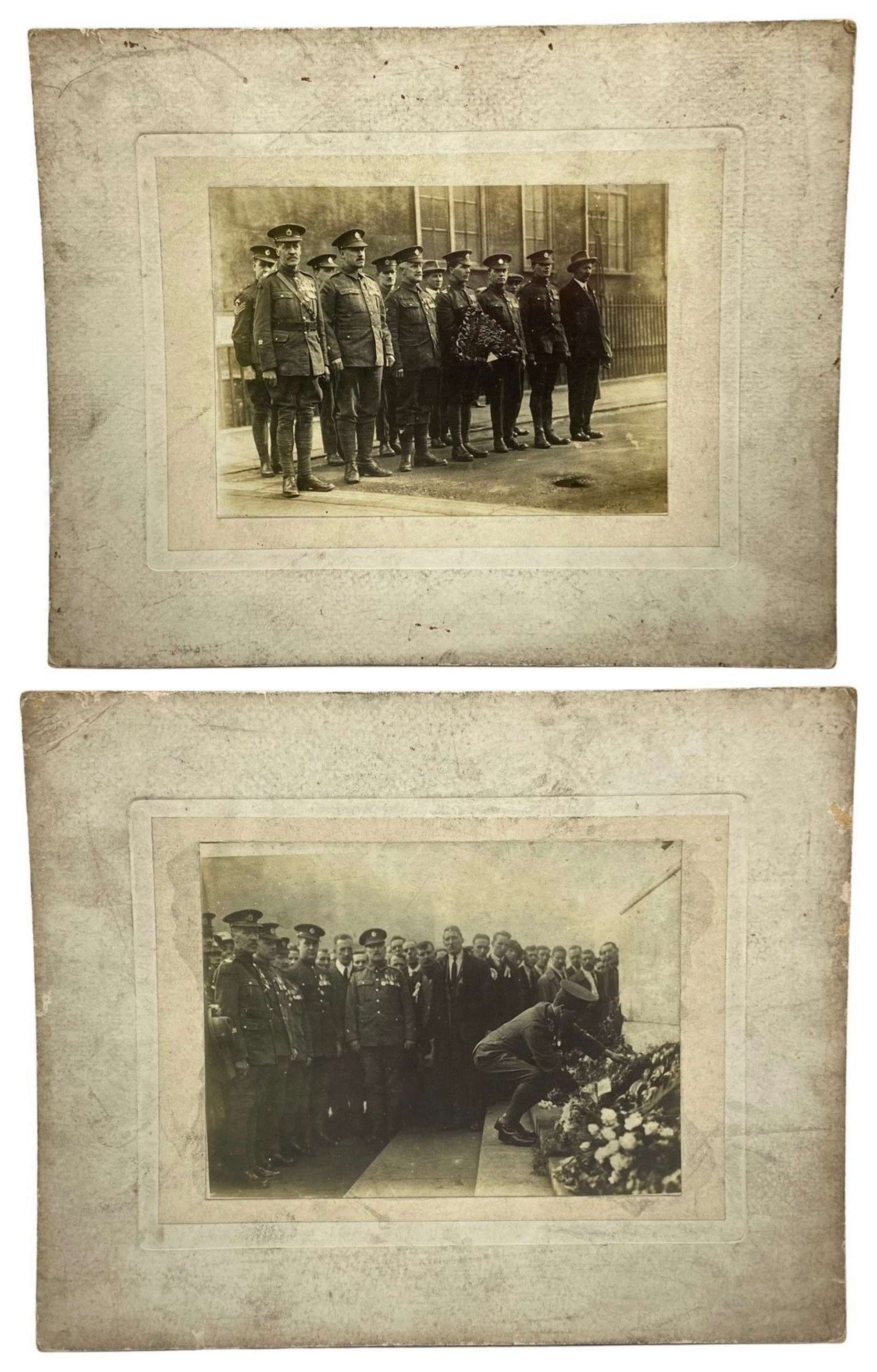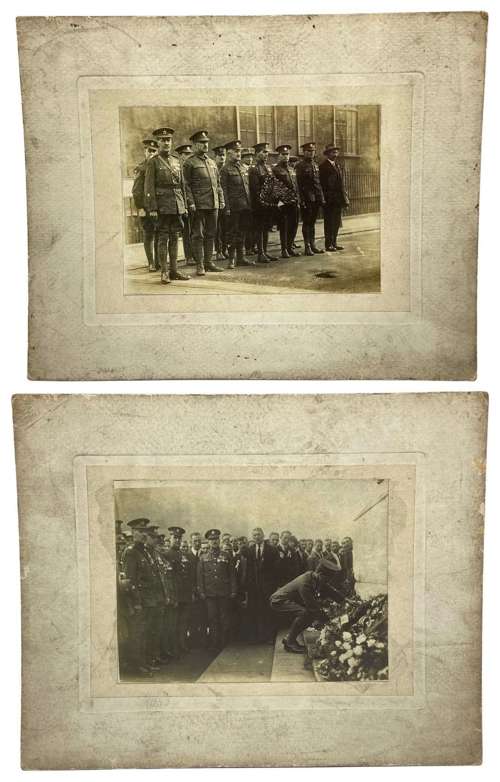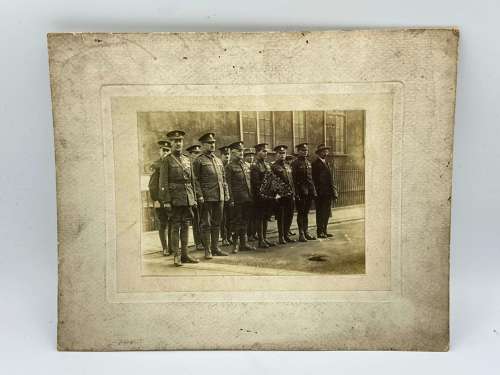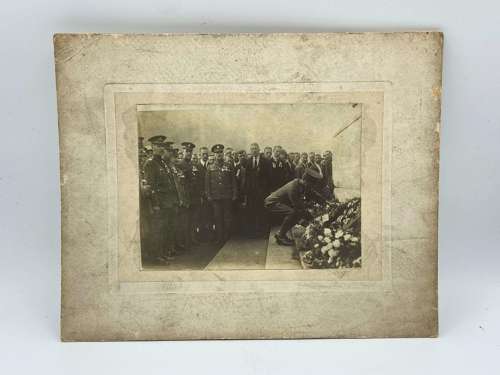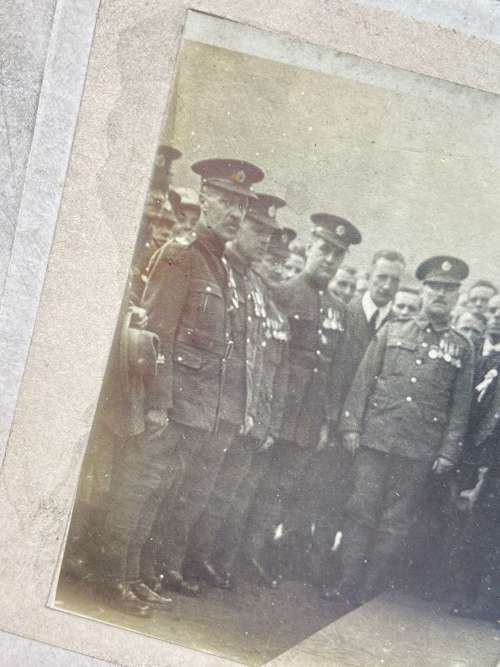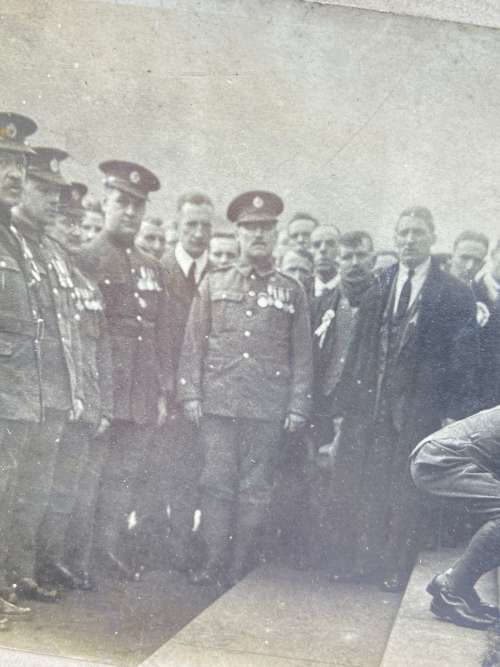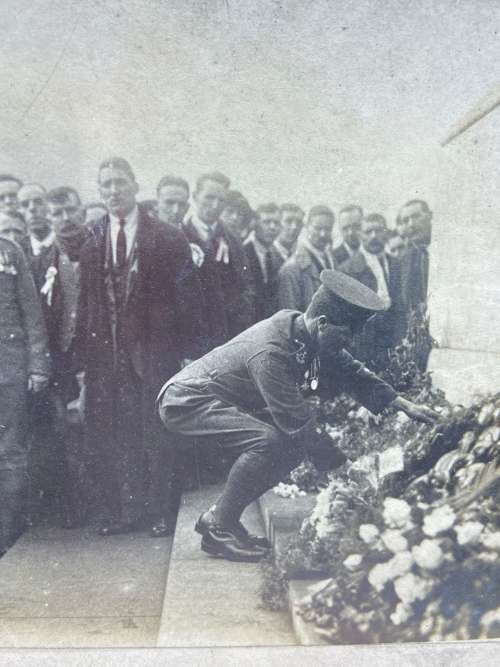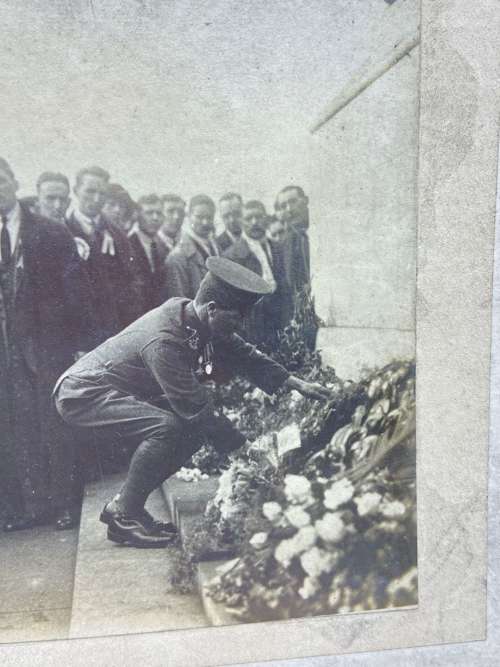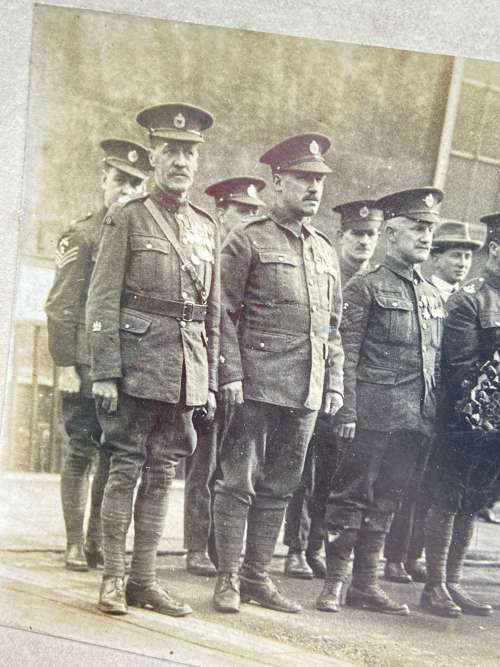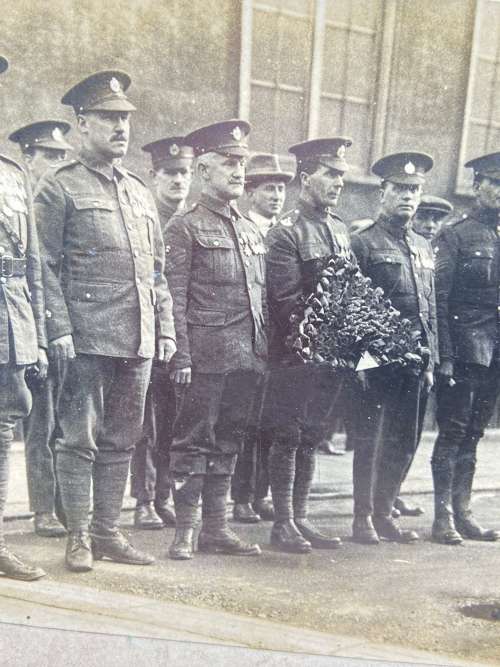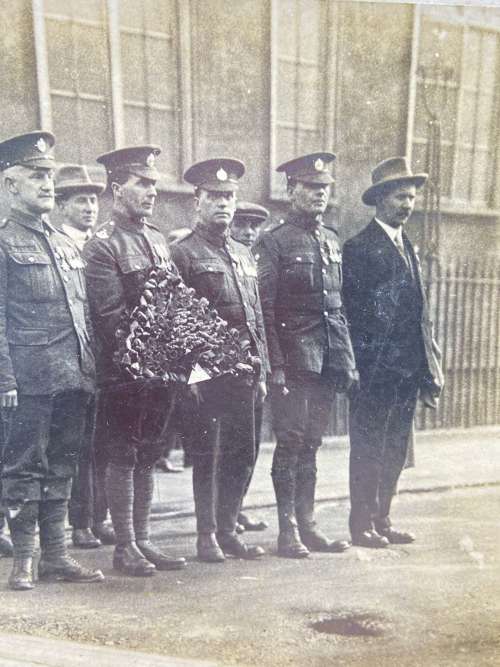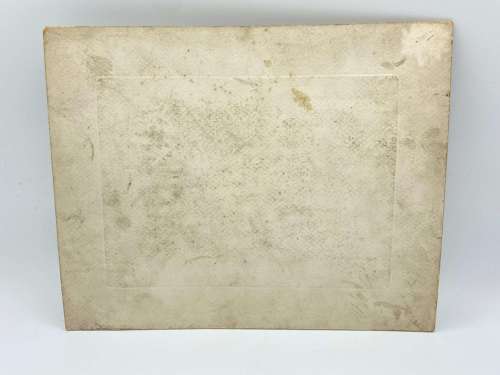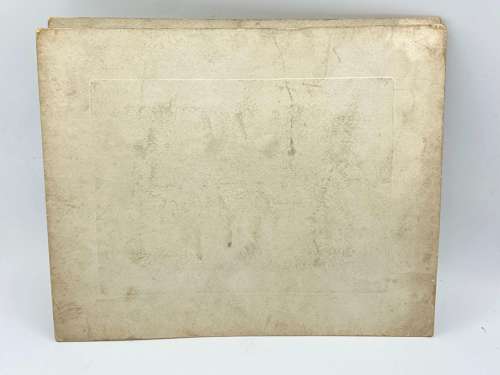WW1 British Army 1919 Victory Day Placing Of Flowers Photographs
Delivery Quote Request
Please fill in the form below to request a delivery quote from Atlas Antiques.
Contact Atlas Antiques
 Dorset, United Kingdom
Dorset, United Kingdom
Simply fill in the below form to get in touch with Atlas Antiques regarding this item.
About this item
For sale is a WW1 British Army 1919 Victory Day Celebrations Placing Of Flowers Mounted Photographs. These are in good condition. The first photographs shows a combination of regimental officers standing with flowers at attention, the second photograph shows a crowd of officer’s and politicians surrounding the temporary plaster & wooden Cenotaph in 1919 lying flowers for the fallen.
When the guns fell silent on 11 November 1918, millions of British Empire soldiers hoped they would soon be back home. But the task of demobilising so many troops was huge. The government's efforts to quickly integrate returning soldiers back into society had mixed results. There was also much debate about how best to mark the Allied victory and commemorate the fallen. Although hostilities ceased with the Armistice on 11 November 1918, the First World War did not end officially until the Treaty of Versailles was signed in June 1919. In Britain, peace was celebrated on 19 July that year, with a Victory Parade in London as the main event. A camp for the troops taking part was set up in Kensington Gardens and thousands of civilians flocked to the capital for the festivities. Nearly 15,000 British Empire servicemen took part in the parade, led by Allied commanders including Field Marshal Sir Douglas Haig and Marshal Ferdinand Foch. The architect Sir Edwin Lutyens designed a cenotaph - an 'empty tomb' to honour the dead - for the marching troops to salute as they passed along Whitehall. His simple and non-denominational monument was represented on the day of the Victory Parade by a temporary structure of wood and plaster. The permanent stone memorial was unveiled on Armistice Day 1920. It is now the scene of the annual National Service of Remembrance. This will be sent via 1st class signed for and dispatched within two working days.Additional Information
16606 (MZ-48669)
![]() Dorset, United Kingdom
Dorset, United Kingdom
Atlas Antiques Promises You - Fresh stock weekly - Fair & affordable prices - Everything listed is original, money back guaranteed. (Unless marked fantasy or reproduction). - Fast responses and delivery's made within 2-3 working days. Atlas Antiques only handles items in terms of...

